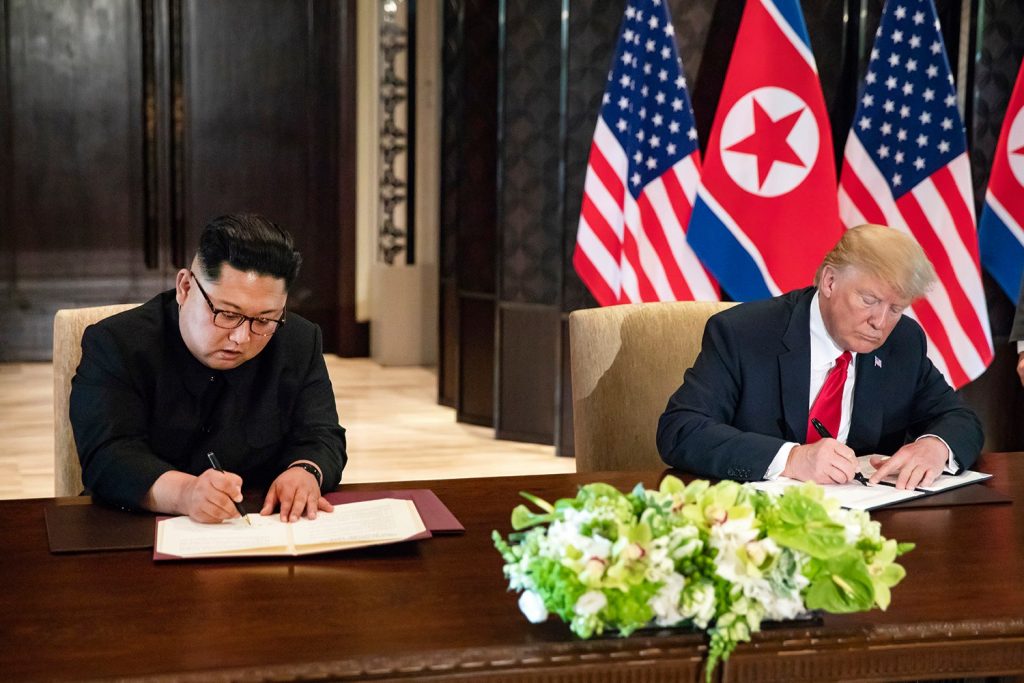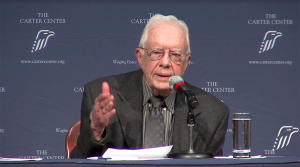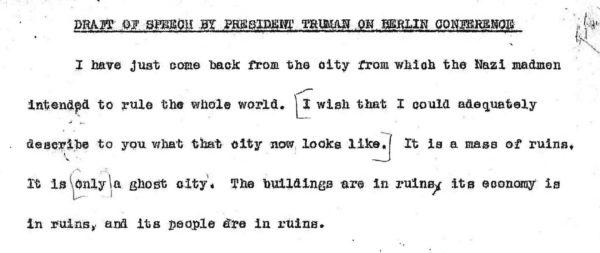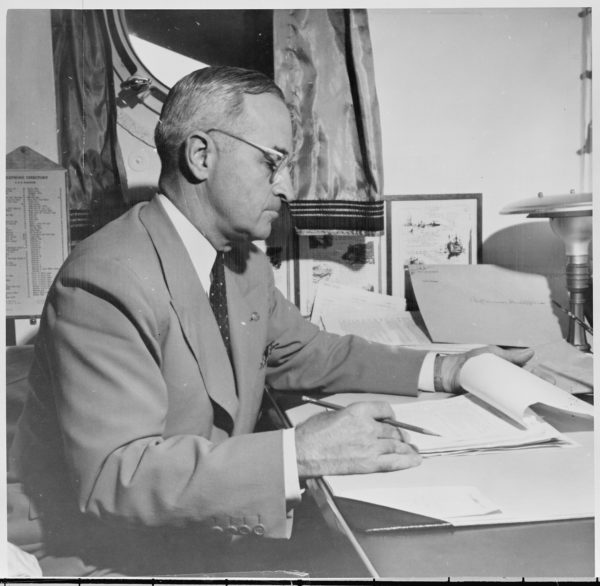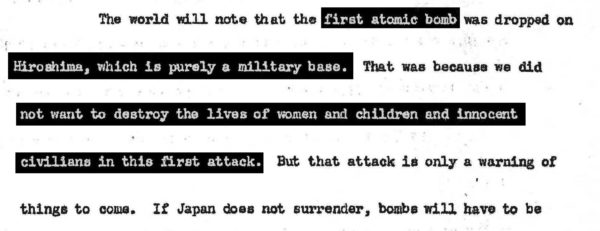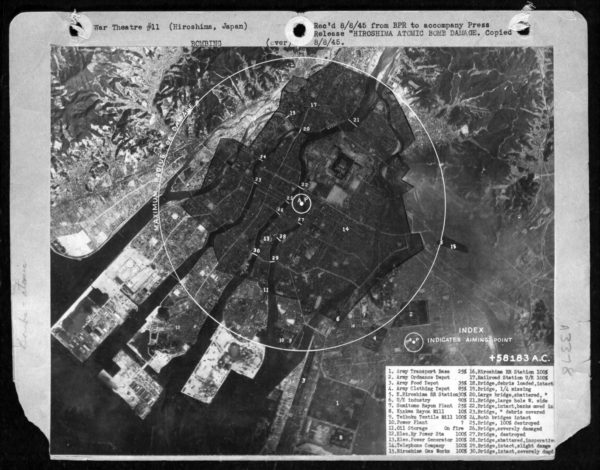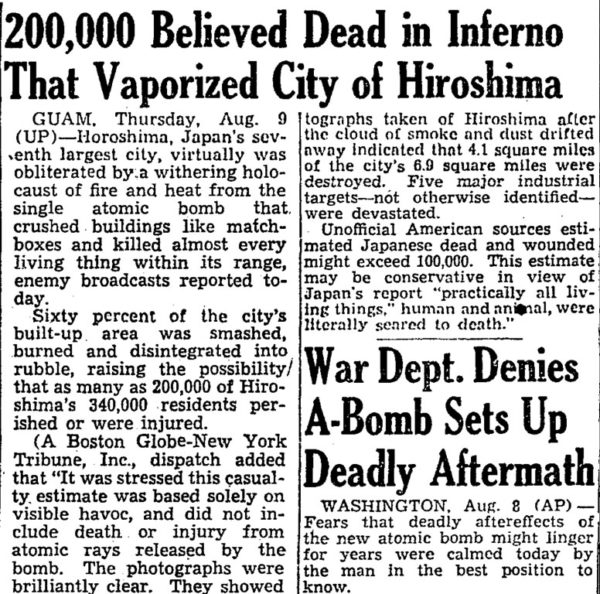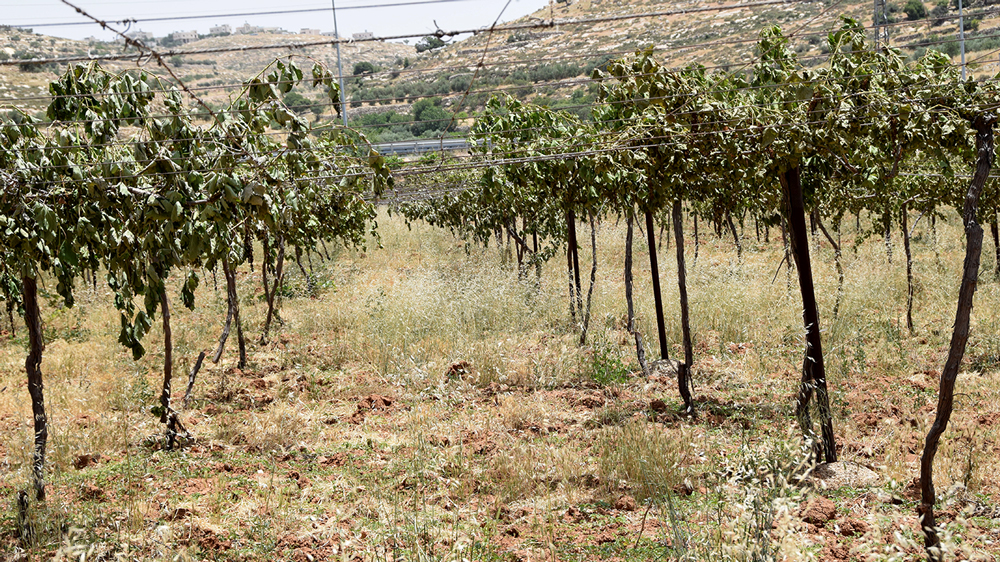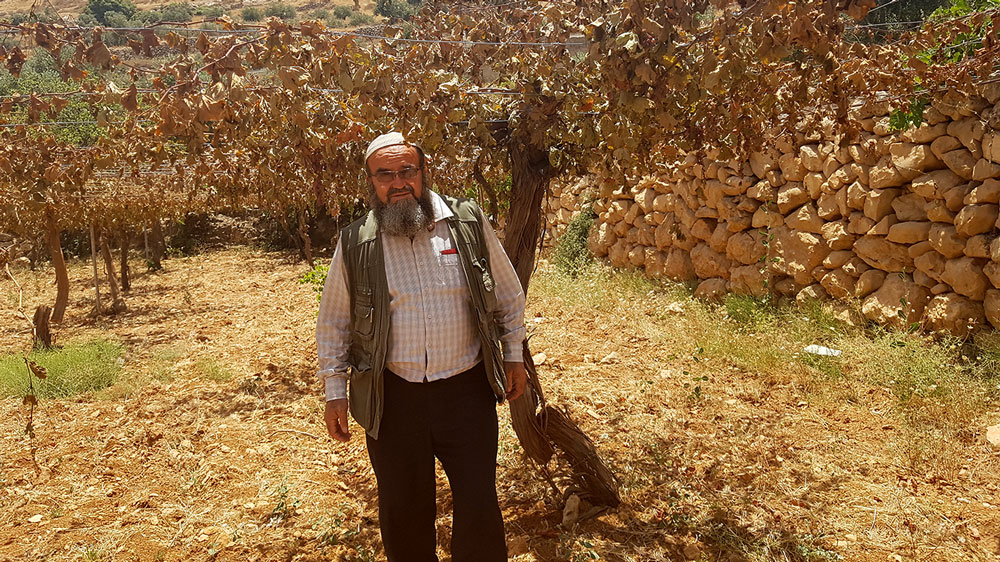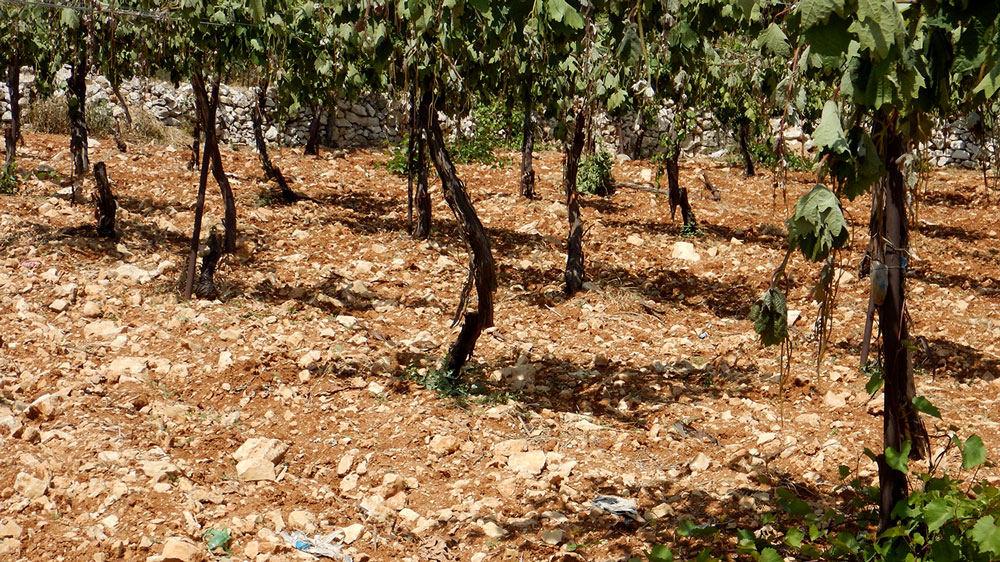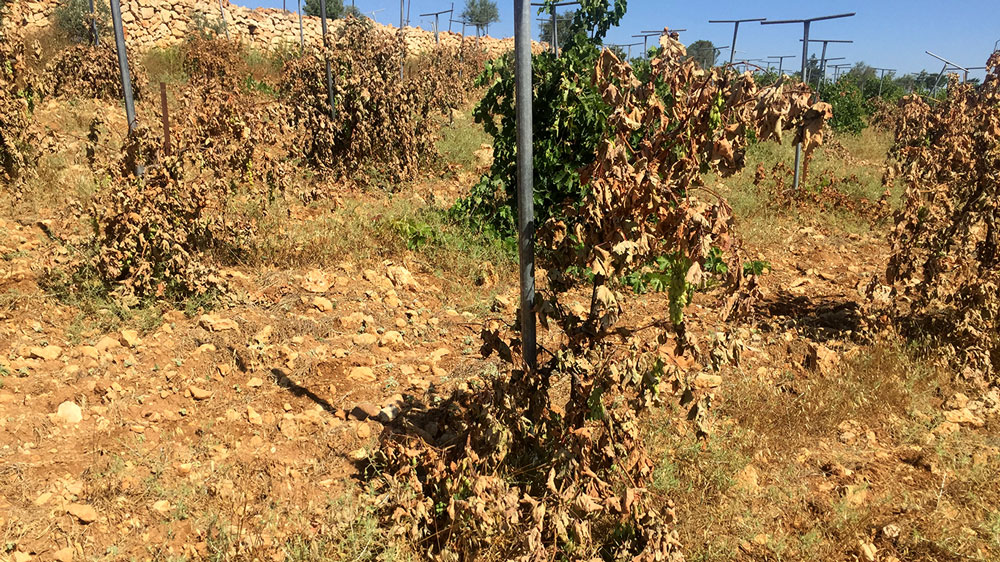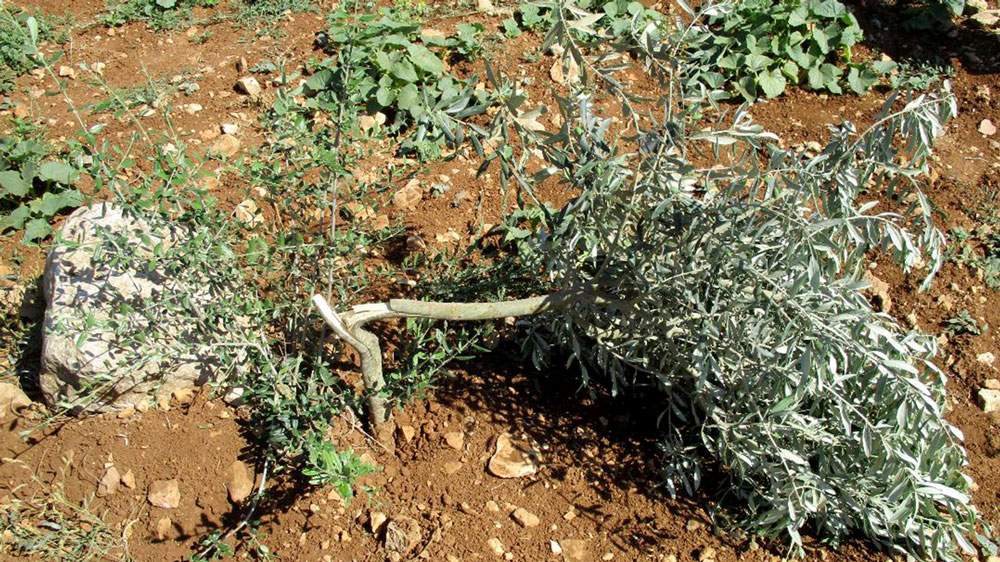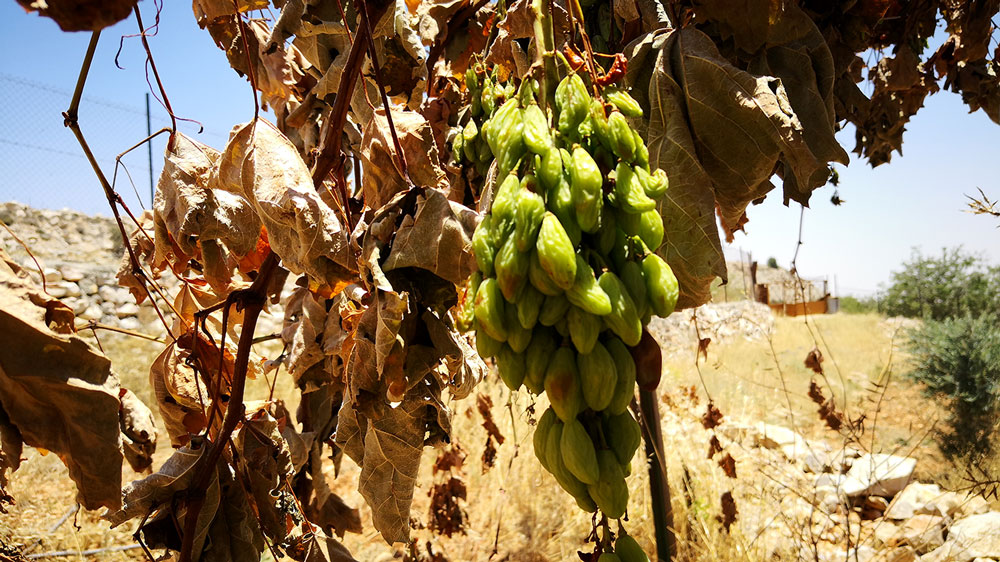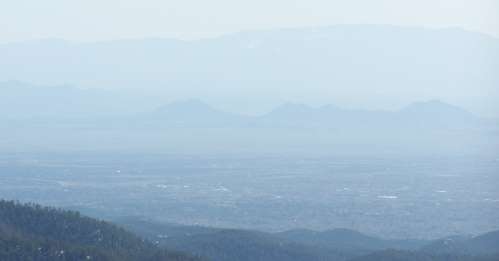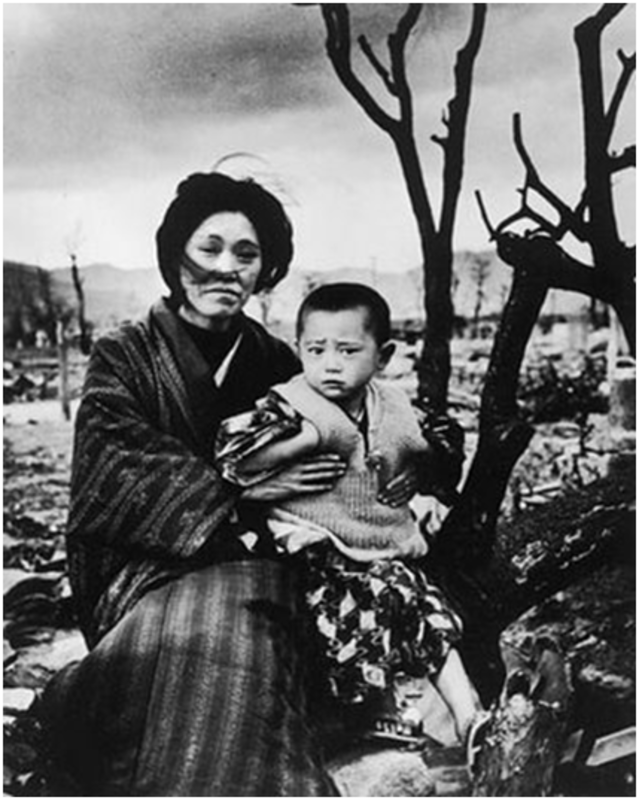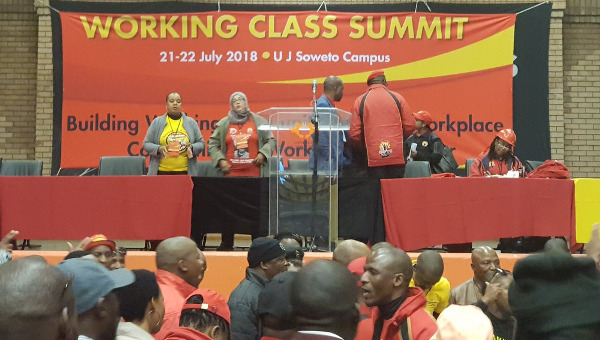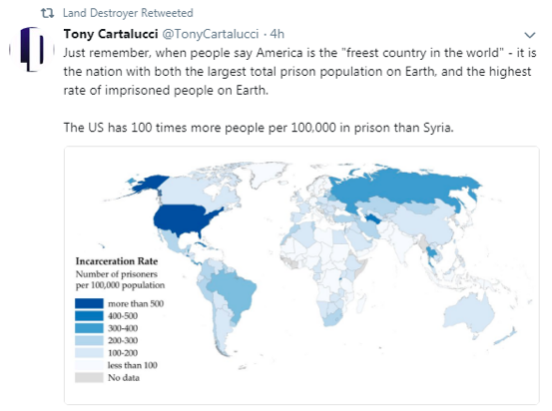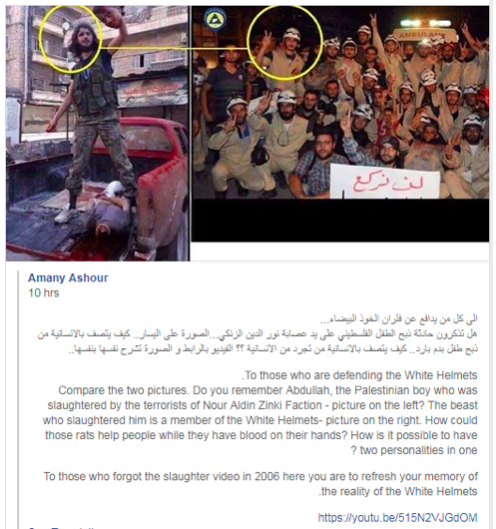Note to readers: please click the share buttons above
A Different Demography
The UAE-Saudi-led economic and diplomatic boycott of Qatar complicates the Gulf state’s preparations to host the 2022 World Cup, but in no way has the event been derailed. The importation of construction materials needed to build eight stadiums, lay dozens of miles of rail work and erect a brand new city may become more expensive or may take longer to arrive as a result of the boycott, but this should not impair the Gulf state’s ability to complete infrastructures on time.1 “The goods from new supply chains are often more expensive and a lot of contractors are already operating on quite low margins… There’s no doubt that the boycott will put an additional premium on what was already going to be a very expensive World Cup”, cautioned Allison Wood, a Middle East and North Africa analyst with strategy firm Control Risks.2
Deep pockets filled by revenues from gas exports, a $335 billion war chest invested in blue chips, and a remaining four-year lead time have prevented Qatar’s dream of hosting the tournament from turning into a boycott-battered nightmare. “There’s a solution for every challenge that presents itself. We work with our contractors to ensure that we can deliver long-term supply chain solutions and alternatives”, said Hassan al-Thawadi, the Secretary General of the Qatar World Cup Supreme Committee for Delivery & Legacy.3
In some ways, if the Gulf crisis were to last another four years until the World Cup, attendance may prove to be a more important issue, and not because Qatar would still be involved in a dispute with its neighbours. The crisis has already become the new normal. Even if it were resolved today, regional relationships will never return to the status quo of before. “This is a wound that has been created for a generation. This will never be forgotten”, noted Qatar Airways CEO Akbar al-Baker.4
The reason attendance could be an issue is that the demography of fans attending the World Cup in Qatar may very well differ from that of past tournaments. Qatar is likely to attract a far greater number of fans from the Middle East, Africa and Asia whose interests, demands and expectations of experience could differ from those of Europeans and Latin Americans.
Governments in Saudi Arabia, the UAE, Egypt and Bahrain, if they were still insistent on maintaining their boycott that involves a ban on travel and the cutting off of all land, sea and air links with Qatar, could find themselves in a sensitive position if they deprived their nationals the opportunity to attend the first ever World Cup held not only in the region but also in an Arab country. How those governments choose to handle this question would have consequences for the nature of the boycott and the status of the complete travel injunction. Qatar has urged the UAE, Saudi Arabia, Bahrain and Egypt to allow their nationals to attend the World Cup. “We separate politics from sports”, Al-Thawadi said, ignoring the fact that Qatar’s sports strategy is a key part of its soft power policy.5
Sensitivity to fans undoubtedly played a role in the UAE’s decision – within weeks of the declaration of the boycott – to exempt beIN Sports, the Al Jazeera television network’s sports franchise, from the blocking of all Qatari television channels in the country.6 The shuttering of Al Jazeera was one of the UAE-Saudi-led alliance’s key pre-conditions for lifting the boycott on Qatar. beIN holds broadcasting rights for major soccer competitions, including England’s Premier League, Spain’s La Liga, the 2018 and 2022 World Cups, the Champions League, the AFC Champions League, the Asian Cup, the CAF Champions League, and the Africa Cup of Nations. The ban deprived fans of access to broadcasts of the world’s major tournaments. The lifting of the ban came days after Qatar won more than a symbolic victory with a decision by the European soccer body UEFA to award beIN Middle Eastern and North African broadcasting rights for the Champions League and grant it rights for the UEFA Europa League.7
Putting Governance to the Test
The lifting of the ban also served to pre-empt criticism by soccer fans as well as possible punitive measures by the Asian Football Confederation (AFC). The AFC alongside world soccer body FIFA’s African affiliate, the Confederation of African Football (CAF), insisted in June 2017 on almost identical statements with respect to upholding the separation of politics and football. They called on football stakeholders to adhere to the principles of neutrality and independence in politics as “part of the statutory missions” of FIFA and its affiliates “as well as the obligations of member associations”.8 The CAF went on to say that it would be “particularly vigilant as regards respect for these principles of neutrality and independence in all future games played under its aegis”. The federation warned that its committees would monitor developments and take punitive action where necessary. Adherence to the policy proved to be perfunctory at times and unevenly enforced. It suggested that the Gulf crisis was putting already sorely battered global and regional soccer governance to the test.
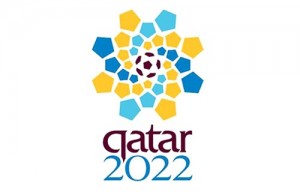
FIFA set the tone for global and regional soccer governance’s chequered adherence to its own principles by contradicting itself within hours in its response to the Gulf crisis. Asked days after the crisis erupted whether the Saudi-UAE-led boycott would impact the 2022 World Cup, FIFA president Gianni Infantino insisted that
“the essential role of FIFA, as I understand it, is to deal with football and not to interfere in geopolitics”.9
Yet, speaking hours later, Infantino waded into the crisis by removing a Qatari referee from a 2018 World Cup qualifier following a request from the United Arab Emirates.10
FIFA, beyond declaring that the decision was taken “in view of the current geopolitical situation”, appeared to be saying by implication that a Qatari by definition of his nationality could not be an honest arbiter of a soccer match involving one of his country’s detractors. The statement amounted to an admission that sports and politics were not separate but indeed inextricably intertwined. On an even slipperier slope, FIFA also appeared to be judging the referee’s level of professionalism based solely on his nationality.
Moreover, FIFA and the AFC were silent when Saudi Arabia, the UAE and Bahrain refused to compete in the Gulf Cup, scheduled to be held in Qatar in 2017. The boycott persuaded Qatar to transfer its hosting rights to Kuwait. FIFA President Gianni Infantino, rather than chastising the three Gulf states for involving the sport in politics, commended Qatar for its “honourable gesture” and attended the tournament’s opening match.11 But the world soccer body was silent when on political grounds the Saudi, Emirati and Bahraini squads refused to participate in news conferences in Kuwait in which Qatari media were present.12
The CAF appeared to be somewhat more assertive than the AFC. It warned Egypt’s two top clubs, arch-rivals Al Ahli FC and Al Zamalek SC, that they could be penalized if they went through with a declared boycott of beIN Sports,13 in response to a statement by the Egyptian Football Association (EFA) supporting Egypt’s participation in the UAE-Saudi-led boycott of Qatar.14 Al Ahli and Al Zamalek said they were barring beIN from their premises and news conferences as part of Egypt’s participation in the Saudi-UAE led diplomatic and economic embargo on the Gulf state.
“The Egyptian FA fully supports the long-awaited decisions of the political administration against an entity that has repeatedly tried to harm our country. In agreement we call on all Egyptian clubs and their personnel to suspend all activities with the Qatari sports channels on all contracts or in programming in rejection of the Qatari attitude”, the statement said. Acting on its warning, the Cairo-based African group subsequently suspended and imposed a $10,000 fine on Al Ahli coach Hossam El Badry for first refusing to address a news conference at which beIN reporters were present, then refusing to give beIN an interview, and finally covering beIN’s microphone and trying to prevent it from recording the press conference.15
The incidents in Egypt and Kuwait suggested that the Gulf crisis was likely to leave deep scars, even after Qatar and its detractors ultimately paper over their differences and end the crisis. The likelihood was that Saudi Arabia and/or the UAE would mount a challenge to Qatar’s commercial grip on the Middle East and North Africa’s sports broadcasting market. It would be both a political and commercial challenge, rooted in a fundamental rift that is likely to play out on the soccer pitch as well as in other arenas long after the Gulf crisis is resolved.
Economically dependent on Saudi Arabia and the UAE, Egypt appeared set to play an important role in the creation of a Saudi competitor to beIN. Saudi Media City chairman Muflih Al-Hafatah said the new network was being established together with Egypt and that its 11 high-definition (HD) channels were “Egyptian with a 100 percent Saudi capital”.16 Al-Hafatah said the channels would charge a fee only if forced to do so because of encryption but would ensure that it was affordable. beIN has suffered in countries like Egypt from the fact that many subscribers could not afford its cost.
Getting Sucked in
FIFA would likely be an arbitrator in the battle between beIN and the new Saudi network, with the kingdom attempting to convince the world soccer body that Qatar could not be allowed to have a monopoly in regional soccer broadcasting rights.17 The underlying message was that FIFA and several of its regional associations would be dragged into the Gulf crisis by hook or by crook even if the issue of Qatar’s World Cup hosting rights was not directly addressed. The more soccer associations involved in the dispute, the more difficult it will be for them to maintain that sports and politics have nothing to do with one another.
FIFA was also likely to be pulled into the dispute by the UAE’s covert and overt efforts predating the crisis18 to convince the world body to deprive Qatar of its hosting rights. It is doubtful that the World Cup is at the core of the Gulf crisis, despite a declaration by Dubai’s top security official, Lt. General Khalfan, that the crisis would be resolved if Qatar surrendered its hosting rights.19Nonetheless, for Qatar’s detractors (and the UAE in particular), the World Cup is quite an important symbol to target, especially given its position as a vehicle for reputational capital.
That is evident from documents from an email account of Youssef al-Otaiba, the UAE Ambassador to the United States, who was either hacked or the victim of a leak by an insider.20 Al-Otaiba had devised a complex financial manoeuvre to undermine Qatar’s currency and deprive the Gulf state of its hosting rights. The effort to deprive Qatar of the World Cup stood in stark contrast to Qatar’s failure to adopt a similar tactic by targeting the 2020 World Expo in Dubai, for example.
Nothing is too outlandish, expensive, or ‘down and dirty’ in the Gulf competition to undermine one’s rival, buy influence, garner soft power, or try to win the hearts and minds of the populace. It is a battle that is fought primarily by the UAE and Qatar, the Gulf’s two megalomaniac states, and played out on European soccer pitches, in the board rooms of Western think tanks and universities, and in the media. Character assassination is fair game. Qatar and the UAE stunned European soccer as the window closed in the fall of 2017 for the buying and selling of players by driving prices through the roof and calling into question European soccer body UEFA’s Financial Fair Play rules.
Qatar-owned French club Paris Saint-Germain (PSG) spent $476 million on two players: FC Barcelona’s Neymar and Monaco’s Kylian Sanmi Mbappé,21 no mean feat for a country of 300,000 citizens locked in an existential battle with its Gulf detractors. The expenditure of $203 million by Abu Dhabi-owned Manchester City was similarly stratospheric but paled in comparison.22
The Qatari-UAE competition for jaw-dropping headlines was about far more than trophy acquisitions and performance on the soccer pitch. By driving the price of soccer players into the stratosphere, Qatar was showing a finger to its Gulf detractors, saying it could shake off their boycott like it would swat a fly. That was priceless in an environment in which the UAE-Saudi-led alliance has failed to garner widespread support for its boycott in both the Muslim world and the broader international community.
For Qatar, the soccer acquisitions were part of a far broader soft power strategy that in many ways might be the most strategic and thought-through approach in the Gulf. It envisioned sports as much as a pillar of national identity as it was a key leg of its effort to amass soft power. The 2022 World Cup was the strategy’s crown jewel. Yet, the strategy has produced only mixed results. Performance on the pitch has not offered the Qatari government the kind of success that various other Arab autocrats have been able to exploit in their bid to boost their image. Qatar is the first World Cup host in almost a century not to qualify for the World Cup on its own merit.23
Fragile Success
Potential success of the Saudi-UAE effort depends in part on garnering support for the two states’ position. So far, only a few nations (mostly politically and/or financially dependent countries) have joined the boycott. Soccer suggests that even that support is fragile. Take the Maldives as an example. A target of massive Saudi investment, the Maldives severed diplomatic relations with Qatar hours after Saudi Arabia and the UAE declared the boycott.24 However, that did not stop the Football Federation of the Maldives from signing a cooperation agreement with its Qatari counterpart five months later.25
Saudi Arabia and the UAE hoped to create an environment conducive to a withdrawal of Qatar’s hosting rights by publicly pushing the notion that Qatar was supporting tourism. German26 and Austrian27 media both reported that a German campaign to stop extremism28 by persuading the European Union to take regulatory and punitive action against funders of extremism was funded by the UAE and Saudi Arabia. The campaign, which targets left- and right-wing as well as Islamic militancy, identified Qatar, together with Turkey, as the main funders of extremism in Europe.29 Supported by prominent Germans and Austrians, many with an immigrant background, the campaign has denied funding by Qatar’s detractors. Businessmen with Qatari interests suspect, however, that the campaign will target Qatar’s hosting rights once it has garnered its targeted one million signatures on a petition demanding tougher EU policies on the funding of extremism. “This initiative is to align with the other German Qatar detractors by next year to agitate for a withdrawal of the hosting rights”, one businessman said.30
All of which makes the Maldives soccer federation’s forging of closer ties to Qatar the more remarkable. The move followed not only the government’s breaking off of diplomatic relations with Qatar but also Saudi efforts to squash criticism of controversial potential investments in the island republic as well as assertions that massive Saudi funding of Sunni Muslim ultra-conservative educational and cultural activities has put the Maldives’ traditional adherence to Sufism, a more mystical strand of Islam, on the defensive.31 Journalists reporting on a potential $10 billion Saudi-funded real estate project that media reports asserted could involve the acquisition by the kingdom of Faafu, a collection of 19 low-lying islands 120 kilometres south of the Maldives capital of Male, were handed cash-filled envelopes during an event at the Saudi embassy in Male to counter the assertion.32 The project would allegedly involve the building of seaports, airports, high-end housing and resorts and the creation of special economic zones.
The Saudis “have had a good run of propagating their world view to the people of the Maldives and they’ve done that for the last three decades. They’ve now, I think, come to the view that they have enough sympathy to get a foothold”, said exiled former Maldives President Mohamed Nasheed, who lost power in 2012 following protests over rising commodity prices and the nation’s poor economy.33
If soccer is anything to go by, Saudi Arabia’s grip on the Maldives may either be fraying or has been overstated by critics like Nasheed. Speaking in Qatar at the signing of the cooperation agreement, Maldives soccer federation President Bassam Adeel Jaleel insisted that the government, on which the football body is financially dependent, was “happy” with the forging of closer ties despite the boycott of the Gulf state.34 Maintaining that the Maldives could learn from Qatari preparations for the World Cup, Jaleel attempted to shield the government by noting that it adhered to the principle of a “separation of politics from football”, a fiction that governments and sports associations uphold because it gives them license to exploit the incestuous relationship between the two to their advantage. In the Maldives, that appeared to amountto hedging the government’s bets as Qatar resists Saudi and UAE pressure.
The Saudi-UAE World Cup effort also sought to exploit continued questions about the integrity of the Qatari bid. That integrity remains in question with legal proceedings in New York and Zurich involving corruption in FIFA and potential wrongdoing in the awarding of World Cups. With legal proceedings likely to drag on for a considerable period of time, Qatar’s more immediate problem is the reputational damage it has suffered as a result of the integrity issue and international criticism of its labour regime. In reputational terms, Qatar has benefitted from reform of the regime as well as perception of the Gulf crisis of one pitting David against Goliath, in which Saudi Arabia and the UAE were attempting to bully their smaller brother into submission. Qatar has emerged, despite continued questions about its relationship with militants, as the resilient underdog defending its independence and its right as a small state to chart its own course.
Qatar’s reforms of its controversial kafala, or labour sponsorship system35that put employees at the mercy of their employers, were likely to become a model for the region. With the reforms, Qatar cemented the 2022 World Cup as one of the few mega-events with a real potential for leaving a legacy of change. Qatar started laying the foundations for that change by early on becoming the first and only Gulf state to engage with its critics, international human rights groups and trade unions. In a rare kudo, Qatar’s fiercest labour critic, the International Trade Union Confederation (ITUC), hailed a Qatari announcement in October 2017 that it was introducing far-reaching reforms as a “breakthrough”.36 The ITUC and human rights groups like Amnesty International and Human Rights Watch have campaigned for labour reform and abolition of kafala since FIFA awarded Qatar the hosting rights for the 2022 World Cup in December 2010.
Breaking Taboos
The successful Qatari bid has also made a mark by cautiously making taboo issues discussable and potentially initiating a process of change in a country in which concerns that stem from a demographic deficit have long prevented the country from confronting intractable issues head on and stalled progress towards proper rule of law. The pressures to which Qatar was exposed sparked tacit discussion on issues such as citizenship and naturalization of foreigners, ones which had long been unmentionable.
To field an Olympic team that would earn Qatar its first ever Olympic medal, Qatar, a tiny state with a population of 2.3 million of which only 300,000 are citizens, granted 23 athletes from 17 countries citizenship in advance of the 2016 Rio de Janeiro Olympic Games. They constituted the majority of the Gulf state’s 39-member team. The athletes’ naturalization, their success notwithstanding, sparked debate about the principle of granting citizenship and who should be awarded the right in a country in which Qatari nationals account for a mere 12 percent of the population.37 Naturalization was long a taboo subject given Qatari fear that it, like any kind of social or political change, could cost the citizenry loss of control of their state and society. Those fears were enhanced by the fact that Qataris realized that there were no easy solutions to a demographic deficit that would prove unsustainable in the long term.
The Qatari debate was echoed in the UAE where Sultan Sooud al-Qassemi, an erudite intellectual, businessman, art collector and member of the ruling family of Sharjah, provoked controversy in articles that advocated a rethinking of restrictive citizenship policies that were likely to exacerbate rather than alleviate long-term problems associated with the demographic deficit. Echoing a sentiment that is gaining traction among Internet-savvy youth who are exposed to a world beyond the confines of the Gulf, Al-Qassemi noted that foreigners with no rights had, over decades, contributed to the UAE’s success. “Perhaps it is time to consider a path to citizenship for them that will open the door to entrepreneurs, scientists, academics and other hardworking individuals who have come to support and care for the country as though it was their own”, he argued.38
Fears of loss of control were fuelled by the fact that the naturalization of athletes for the Olympic teams sparked questions among non-Qataris who have been resident in the Gulf state and whose children were born there but who have no real path to citizenship even though their skills and expertise are and will be needed as the country streamlines and diversifies its economy. Qatari naturalization law stipulates that foreigners who speak Arabic and have resided in the country (of which the majority is non-Arabic speaking even though Arabic is the official language) for 25 years can be considered for citizenship on a case-by-case basis.
Limited opportunity for citizenship puts many of the country’s non-Qatari residents in an emotional bind. They do not want to “rock the boat” for themselves and their families, yet their existence remains precarious. “This is where I was born, this is my home. I accept things as they are, but it does sting”, said a South Asian professional who was born and grew up in Qatar.39
Ironically, one positive social and political fallout of Qatar’s sports strategy was that the South Asian’s sentiment is beginning to be reflected among some Qatari youth who were more willing to openly discuss sensitive issues. Referring to Qatar’s 14-member Olympic handball team, 11 of whom are naturalized citizens, public sector employee Hamed Al-Khater asked on Twitter: “If these guys get naturalized then what about doctors, scientists, engineers, academics and artists? Don’t they add more value to society?”40
In another taboo-breaking incident, Doha News, against the backdrop of persistent questions in the Western soccer fan community about how Qatar would deal with gays attending its World Cup, published an article entitled: “What it’s like to be gay and Qatari?”. Written by a man using the pseudonym Majid Al-Qatari (Majid the Qatari), the article asserted that gay Qataris disguised their sexuality by being publicly homophobic, but travelled abroad to be themselves. Majid suggested that gays often got married and raised families in what amounted to putting “a Band-Aid on a wound. The wife will get conjugal visits and the men will just go their own way”.41
Al-Khater’s question and Al-Qatari’s exposé are noteworthy in a country where public discussion of these issues has long been taboo even if they likely constitute a minority view. A majority of Qataris see homosexuality as banned by Islam and question whether foreigners can ever become true nationals. They also fear that it would jeopardize national identity, conservative culture and deep-rooted tribal values.
Integrity vs Leverage
The integrity issue is likely to prove a tougher nut to crack than the labour controversy. On the principle of where there is smoke, there is fire, Qatar is in a bind. Testimony of a star witness, Alejandro Burzaco, a co-defendant and the former head of Argentine sports marketing company Torneos y Competencias, in a New York courtroom revealed new allegations of Qatari wrongdoing in its successful bid for the 2022 World Cup hosting rights.42 Burzaco is one of more than 40 officials, business executives and entities that have been indicted in the United States since Swiss police accompanied by FBI agents in 2015 raided a hotel in Zurich where senior FIFA members were gathered for a congress of the world soccer body. Burzaco asserted that the first three defendants to stand trial in the warren of FIFA-related cases – former South American soccer confederation CONMEBOL President Juan Angel Napout and past heads of the Brazilian and Peruvian soccer federations, Juan Maria Marin and Manuel Burga – were among several senior Latin American soccer officials who had been paid tens of millions of dollars in bribes for their votes in favour of the Qatari World Cup.43
Qatar’s sports-related financial dealings were also under scrutiny on other fronts. Swiss prosecutors opened criminal proceedings against Qatari national, beIN chief executive and chairman of French soccer club Paris St-Germain Nasser al-Khelaifi.44 The proceedings were centred on the allegation that Al-Khelaifi had bribed disgraced former FIFA secretary general Jerome Valcke to ensure that beIN was awarded the broadcasting rights for the 2026 and 2030 World Cups. Qatar as well as Al-Khelaifi have consistently denied any wrongdoing.
A French investigation into possible corruption45 in business deals related to Qatar’s hosting rights links former French President Nicolas Sarkozy to millions of euros involved in business deals that were allegedly part of a three-way deal to ensure French support for Qatar’s World Cup bid46 as well as the vote of one-time French star Michel Platini, who headed UEFA and was a member of FIFA’s executive committee before being banned from involvement in soccer on corruption charges.
France’s interference in the FIFA vote on the Qatari World Cup bid was documented in a lengthy exposé in French soccer magazine, France Football.47 The magazine detailed a meeting engineered by then President Sarkozy in 2010 between Platini, then Qatari Crown Prince and current Emir Sheikh Tamim bin Haman Al-Thani, and a representative of PSG. The three-way deal cut at that meeting allegedly involved Platini agreeing to vote for the Qatari bid in exchange for Qatar acquiring the French club, creating a French sports television channel, and investing in France.
Britain’s The Daily Telegraph48 reported that French investigators were examining whether Sarkozy may have received funds from deals linked to the 2010 meeting, including the sale to Qatar of a five percent stake in French water management company Veolia as well as the purchase in 2010 of PSG by Oryx Qatar Sports Investments, believed to be a Qatari government investment vehicle.49 The British paper, quoting French sources, reported that $247 million “may have been siphoned off the side lines” of the deals and also used for payments to World Cup officials. A spokeswoman for the National Financial Prosecutor’s Office in Paris said they were “carrying out two separate preliminary inquiries” into Veolia and the World Cup bid. She said there was no established link between the two inquiries and Sarkozy was not “formally and personally targeted at this stage”.50
For activist critics of Qatar, there are two questions. Who do they want to get in bed with? Qatar’s detractors, the United Arab Emirates and Saudi Arabia hardly have stellar human and labour rights records. If anything, their records are worse than that of Qatar, which admittedly does not glow.
The second question critics have to ask themselves is how best to leverage the World Cup, irrespective of whether the Qatari bid was compromised or not. On the assumption that it may have been compromised, the question is less how to exact retribution for a wrong doing that was common practice in global football governance. Leveraging should focus on how to achieve a fundamental reform of global sports governance that has yet to emerge six years into a crisis that was in part sparked by the Qatar World Cup. This goes to the heart of the fact that untouched in the governance crisis is the corrupting, ungoverned, and incestuous relationship between sports and politics.
Sports is Politics by Definition
The future of the Qatar World Cup and the Gulf crisis speaks to the pervasiveness of politics in sports. The World Cup is political by definition. Retaining Qatar’s hosting rights or depriving the Gulf state of the right to host the tournament is ultimately a choice with political consequences. As long as the crisis continues, retaining rights is a testimony to Qatar’s resilience, deprival would be a victory for its detractors.
The real yardstick in the debate about the Qatari World Cup should be how the sport and the integrity of the sport benefit most. And even then, politics is never far from what the outcome of that debate is. Obviously, instinctively, the optics of no retribution raises the question of how that benefits integrity.
Yet, the potential legacy of social and economic change that is already evident with the Qatar World Cup is more important than the feel -good effect of having done the right thing with retribution or the notion of setting an example. Add to that the fact that in current circumstances, a withdrawal of hosting rights would not only be interpreted as a victory of one side over the other, but would also further divide the Arab and Muslim world and enhance a sense among many Muslims of being on the defensive and under attack.
To be clear, the rot in sports governance goes far beyond financial and performance corruption. That is evident in the way that the Gulf crisis, the Saudi -Iranian rivalry, and the Israeli -Palestinian conflict increasingly permeate soccer with a mounting number of decisions that upend the notion of a separation of sports and politics and the resignation from FIFA’s Council of Kuwaiti Sheikh Ahmad Al -Fahad Al -Sabah, long seen as one of the three most powerful men in international sports. Ahmad, a pony -tailed member of Kuwait’s ruling family, and former minister and head of Organization of the Petroleum Exporting Countries (OPEC), is the living denial of a separation between sport and politics.
A statement by the US Attorney’s Office in New York’s Eastern District did not refer to Mr. Ahmad by name.51 The statement asserted however that Richard Lai, a member of FIFA’s Audit and Compliance Committee and President of the Guam Football Association, had received more than $850,000 in bribes between 2009 and 2014 “from a faction of soccer officials in the AFC region” to help “officials in that faction identify other officials in the AFC to whom they should offer bribes. The goal of this scheme was for the faction to gain control of the AFC and influence FIFA”, the statement said.
Ahmad is believed to be one of four co-conspirators listed in Lai’s indictment that include a Kuwaiti official of the Olympic Council of Asia (OCA), which has been headed by Ahmad for the past 26 years. Ahmad’s resignation constitutes the first instance in which US legal proceedings against corruption in global soccer governance have touched Asia. Ahmad denied the assertions made by Lai,52 who pleaded guilty to wire fraud conspiracy in the United States, as well as past allegations that the OCA had offered bribes to influence past elections in the Asian Football Confederation.
Ahmad’s decision to resign and not to run for re-election at this month’s FIFA congress in Bahrain put an end to his effort to exploit his international sports stature to further his political ambitions in a bitter power struggle within Kuwait’s ruling family. To be fair, both parties within the family played politics with sports. Ahmad’s position, however, allowed him to persuade the International Olympic Committee (IOC), of which he is a member, as well as virtually all international sports associations, to suspend Kuwaiti membership as part of the Kuwaiti politician’s bid for power.53 Ahmad long used his position to put his own men in office. The IOC lifted the 18-month suspension in December 2017 in time for the Gulf Cup.
Men like Ahmad and his long -time protégé, AFC president Sheikh Salman Bin Ibrahim Al -Khalifa, a Bahraini national, symbolize the intertwining of sports and politics. They are imperious, ambitious, power -hungry products of autocracies who have worked assiduously to concentrate power in their hands and side -line critics clamouring for real reform. Hailing from countries governed by autocratic, hereditary leaders, they have been accused of being willing to occupy their seats of power at whatever price. Ambition, alleged corruption, and greed is their potential Achilles’ heel. That is what caused the demise in 2012 of Mohammed Bin Hammam, a Qatari national who headed the AFC and was a member of FIFA’s governing council. Bin Hammam was banned for life by FIFA from involvement in soccer on charges of ‘conflict of interest’that related to both Qatar’s World Cup and his own campaign in 2010 -2011 to become FIFA president.
If the Qatar World Cup – given the controversy swirling around it and the fact that the World Cup has become a geopolitical football – ultimately leads to an honest and open debate about the relationship of politics and sports, Qatar, unwittingly rather than deliberately, will have made a fundamental contribution to a healthier governance of sports in general, and soccer in particular.
*
This article was originally published on journals.openedition.org.
Dr. James M. Dorsey is a senior fellow at the S. Rajaratnam School of International Studies, co-director of the University of Würzburg’s Institute for Fan Culture, and co-host of the New Books in Middle Eastern Studies podcast. James is the author of The Turbulent World of Middle East Soccer blog, a book with the same title as well as Comparative Political Transitions between Southeast Asia and the Middle East and North Africa, co-authored with Dr. Teresita Cruz-Del Rosario, Shifting Sands, Essays on Sports and Politics in the Middle East and North Africa, and just published China and the Middle East: Venturing into the Maelstrom
Notes
James M. Dorsey, “Gulf Crisis Creates Opportunity for Asian Nations”, Pragati, 28 November 2017. Accessed on 29.11.2017, at https://www.thinkpragati.com/opinion/2772/gulf-crisis-creates-opportunity-asian-nations/.
Zainab Fattah, “Qatar Says Boycott Won’t Affect 2022 World Cup Preparation”, Bloomberg, 30 July 2017. Accessed on 30.07.2017, at https://www.bloomberg.com/news/articles/2017-07-30/soccer-world-cup-host-scrambles-to-bypass-saudi-led-boycott.
Interview with the author, 26 November 2017.
Andrew Simmons, “Akbar al-Baker on the Gulf Crisis and Qatar Airways”, Al Jazeera, 14 June 2017. Accessed on 14.06.2017, at https://www.aljazeera.com/programmes/talktojazeera/2017/06/akbar-al-baker-qatar-airways-170613020759574.html.
Interview with the author, 26 November 2017.
Steven McCombe and Roberta Pennington, “BeIN Sports Back on TV in the UAE”, The National, 22 July 2017. Accessed on 22.07.2017, at https://www.thenational.ae/uae/bein-sports-back-on-tv-in-the-uae-1.613012.
Al Jazeera, “beIN Signs New Contract to Broadcast UEFA Matches”, 20 July 2017. Accessed on 20.07.2017, at https://www.aljazeera.com/news/2017/07/bein-signs-contract-broadcast-uefa-matches-170720173329310.html.
Asian Football Confederation, “AFC Upholds Principles of Political Neutrality”, 23 June 2017. Accessed on 23.06.2017, at http://www.the-afc.com/media/afc-upholds-principles-of-political-neutrality-37612.
Reuters, “FIFA President Says Qatar World Cup Not Under Threat”, 11 June 2017. Accessed on 11.06.2017, at https://www.reuters.com/article/us-gulf-qatar-fifa/fifa-president-says-qatar-world-cup-not-under-threat-idUSKBN1920T2?utm_campaign=trueAnthem:+Trending+Content&utm_content=593d6a3004d30154541f7820&utm_medium=trueAnthem&utm_source=twitter.
Rob Harris, “FIFA Removes Qatari Match Officials Due to Diplomatic Crisis”, Associated Press, 11 June 2017. Accessed on 11.06.2017, at https://apnews.com/632e19b93aa54bb29e58462d80d91127.
The New Arab, “FIFA Commends Qatar for Transferring Boycotted Gulf Cup to Kuwait”, 10 December 2017. Accessed on 10.12.2017, at https://www.alaraby.co.uk/english/news/2017/12/10/fifa-commends-qatar-for-transferring-gulf-cup-to-kuwait.
Al Arabiya English, “Saudi, Emirati Football Teams Withdraw from Press Conferences ahead of Gulf Cup”, 21 December 2017. Accessed on 21.12.2017, at https://english.alarabiya.net/en/sports/2017/12/21/Saudi-Emirati-football-teams-withdraw-from-press-conferences-ahead-of-Gulf-Cup.html.
Robert Malit, “CAF Issues Veiled threat over beIN Sports Boycott”, KingFut.com, 22.06.2017. Accessed on 22.06.2017, at https://www.kingfut.com/2017/06/22/caf-issues-veiled-threat-over-bein-sports-boycott/?utm_content=buffer5588e&utm_medium=social&utm_source=twitter.com&utm_campaign=buffer.
Ahram Online, “Egyptian Football Association, Clubs to Boycott beIN Sports after Severing Ties with Qatar”, 5 June 2017. Accessed on 05.06.2017, at http://english.ahram.org.eg/NewsContent/6/51/270325/Sports/Egyptian-Football/Egyptian-Football-Association,-clubs-to-boycott-be.aspx.
Associated Press, “Al Ahly Coach Fined and Suspended as Row over Qatar Reaches Egyptian Football”, The National, 14 July 2017. Accessed on 14.07.2017, at https://www.thenational.ae/world/mena/al-ahly-coach-fined-and-suspended-as-row-over-qatar-reaches-egyptian-football-1.608783.
Lulwa Shalhoub, “Saudi-Egyptian Sports Alliance to Replace Blocked Qatari beIN Sports”, Arab News, 20 June 2017. Accessed on 20.06.2017, at http://www.arabnews.com/node/1117646/media.
TradeArabia, “Saudi Plans New Arab Channel to End Qatar Monopoly”, 14 June 2017. Accessed on 14.06.2017, at http://www.tradearabia.com/news/MEDIA_326338.html.
James M. Dorsey (2018), Shifting Sands: Essays on Sports and Politics in the Middle East and North Africa. Singapore: World Scientific, 323-350.
Jon Gambrell, “Official Says Qatar Giving Up World Cup May End ‘Crisis’”, Associated Press, 9 October 2017. Accessed on 09.10.2017, at https://www.bloomberg.com/news/articles/2017-10-09/uae-official-urges-qatar-to-give-up-world-cup-to-end-crisis.
Ryan Grim and Ben Walsh, “Leaked Documents Expose Stunning Plan to Wage Financial War on Qatar – And Steal the World Cup”, The Intercept, 9 November 2017. Accessed on 09.11.2017, at https://theintercept.com/2017/11/09/uae-qatar-oitaba-rowland-banque-havilland-world-cup/.
Motez Bishara, “European Soccer Feels Force of PSG and Qatar’s ‘Soft Power’”, CNN, 1 September 2017. Accessed on 01.09.2017, at http://edition.cnn.com/2017/09/01/football/soft-power-and-football-mega-transfers-psg-neymar-mbappe-qatar/index.html.
Evan Bartlett, “Manchester City’s Annual Defence Spending Exceeds that of 47 Actual Countries”, i News, 25 July 2017. Accessed on 25.07.2017, at https://inews.co.uk/sport/football/manchester-city-defence-spending-countries/.
FourFourTwo, “Qatar Fail to Qualify for 2018 World Cup, Bringing to Light Eye-Opening Fact”, 31 August 2017. Accessed on 31.08.2017, at https://www.fourfourtwo.com/features/qatar-fail-qualify-2018-world-cup-bringing-light-eye-opening-fact.
Maldives Independent, “Maldives Severs Diplomatic Ties with Qatar”, 5 June 2017. Accessed on 05.06.2017, at http://maldivesindependent.com/politics/maldives-severs-diplomatic-ties-with-qatar-131067.
MenaFn, “Qatar and Maldives Join Hands to Uplift Football”, 1 November 2017. Accessed on 01.11.2017, at http://menafn.com/qn_news_story_s.aspx?storyid=1096027194&title=Qatar-and-Maldives-join-hands-to-uplift-football.
Daniel Bax, “Der Feind meines Feindes [The Enemy of my Enemy]”, Tageszeitung, 30 October 2017. Accessed on 30.10.2017, at https://www.taz.de/!5456830/.
Michael Voelker, “Plattform ‘Stop Extremism’: Unklare Finanzflüsse um Efgani Dönmez [‘Stop Extremism’ Platform: Unclear flow of funds to Efgani Doenmez]”, Der Standard, 8 October 2017. Accessed on 08.10.2017, at https://derstandard.at/2000065560659/Plattform-Stop-Extremism-Unklare-Finanzfluesse-um-Efgani-Doenmez.
Stop Extremism, accessed on 08.10.2017, at https://www.en.stopextremism.eu/.
Stop Extremism, accessed on 08.10.2017, at https://www.stopextremism.eu/demands.
Interview with the author, 31 October 2017.
James M. Dorsey, “Why Saudi Arabia, China and the Islamic State Are Courting the Maldives (JMD in SCMP)”, blog The Turbulent World of Middle East Soccer, 13 March 2017. Accessed on 13.03.2017, at https://mideastsoccer.blogspot.sg/2017/03/why-saudi-arabia-china-and-islamic.html.
Avas Online, “Saudi’s Cash ‘Gift’ to Maldives Journos Sparks Concern”, 20 February 2017. Accessed on 20.02.2017, at https://avas.mv/en/29796.
Karl Mathiesen and Megan Darby, “Saudis Make Maldives Land Grab to Secure Oil Routes to China”, Climate Home News, 5 March 2017. Accessed on 05.03.2017, at http://www.climatechangenews.com/2017/03/05/saudis-make-maldives-land-grab-secure-oil-routes-china/.
Gulf Times, “Politics and Sports Don’t Mix: Maldives Football Chief”, 1 November 2017. Accessed on 01.11.2017, at http://www.gulf-times.com/story/569629/Politics-and-sports-don-t-mix-Maldives-football-ch.
James M. Dorsey, “Activists and Gulf Crisis Turn Qatar into Potential Model of Social Change”, blog The Turbulent World of Middle East Soccer, 26 October 2017. Accessed on 26.10.2017, at https://mideastsoccer.blogspot.pt/2017/10/activists-and-gulf-crisis-turn-qatar.html.
BBC News, “Qatar Introduces Minimum Wage for First Time”, 25 October 2017. Accessed on 25.10.2017, at http://www.bbc.com/news/world-middle-east-41752490.
Tom Finn, “Qatar’s Recruited Athletes Stir Debate on Citizenship”, Reuters, 25 August 2016. Accessed on 25.08.2016, at http://www.reuters.com/article/us-qatar-olympics-nationality-idUSKCN11015P.
Sultan Sooud Al Qassemi, “Give Expats an Opportunity to Earn UAE Citizenship”, Gulf News, 22 September 2013. Accessed on 22.09.2013, at http://gulfnews.com/opinion/thinkers/give-expats-an-opportunity-to-earn-uae-citizenship-1.1234167.
Interview with the author, 18 March 2016.
Hamed al-Khater, Twitter, 10 August 2016. Accessed on 10.08.2016, at https://twitter.com/HamadK7/status/763351422167556097
Majid Al-Qatari, “What It’s Like to Be Gay and Qatari”, Doha News, 5 August 2016. Accessed on 05.08.2016, at http://dohanews.co/what-its-like-to-be-gay-and-qatari/.
Graham Dunbar and Rob Harris, “World Cup Bribes, Death Threats: Corrupt World of FIFA”, Associated Press, 20 November 2017. Accessed on 20.11.2017, at https://apnews.com/4c704914a9d244e580cc26192d289d86?utm_content=buffer9a48f&utm_medium=social&utm_source=twitter.com&utm_campaign=buffer.
Tom Hays, “FIFA Official Demanded $80 Million in Bribes from Qatar for World Cup Vote, Trial Hears”, Associated Press, 15 November 2017. Accessed on 15.11.2017, at https://www.thestar.com/sports/soccer/2017/11/15/fifa-official-demanded-80-million-in-bribes-from-qatar-for-world-cup-vote-trial-hears.html.
Aimee Lewis, “Swiss Prosecutors Open Investigation into Paris Saint-Germain’s Qatari Chairman Nasser Al-Khelaifi”, CNN, 13 October 2017. Accessed on 13.10.2017 at https://edition.cnn.com/2017/10/12/football/nasser-al-khelaifi-paris-st-germain-fifa-criminal-proceedings/index.html.
Seth Jacobson, “Sarkozy Probed over Qatar 2022 Graft Claims”, The National, 4 August 2017. Accessed on 04.08.2017, at https://www.thenational.ae/world/europe/sarkozy-probed-over-qatar-2022-graft-claims-1.616804.
James M. Dorsey, “FIFA’s Blatter Unwittingly Pinpoints Soccer Governance’s Prime Issues”, blog The Turbulent World of Middle East Soccer, 5 July 2015. Accessed on 05.07.2015, at https://mideastsoccer.blogspot.co.uk/2015/07/fifas-blatter-unwittingly-pinpoints.html.
Richard Morgan, “Qatargate 2022: Outlining the Evidence that Suggests Qatar Cheated to Win Bid”, Bleacher Report, 6 February 2013. Accessed on 06.02.2013, at https://bleacherreport.com/articles/1518079-qatargate-2022-outlining-the-evidence-that-suggests-qatar-cheated-to-win-bid.
Claire Newell, Edward Malnick, Luke Heighton and Rory Mulholland, “Nicolas Sarkozy Under Scrutiny in Prosecutors’ Probe into Qatar World Cup Vote-Buying”, The Telegraph, 4 August 2017. Accessed on 04.08.2017, at http://www.telegraph.co.uk/news/2017/08/03/nicolas-sarkozy-scrutiny-prosecutors-probe-qatar-world-cup-vote/.
Saj Chowdhury, “Neymar: How Can PSG Afford to Pay £198m for the Barcelona Forward?”, BBC Sport, 22 July 2017. Accessed on 22.07.2017, at http://www.bbc.com/sport/football/40690701.
Caroline Mortimer, “Nicolas Sarkozy ‘Under Scrutiny as Part of French Probe into Qatar World Cup Scandal’”, Independent, 4 August 2017. Accessed on 04.08.2017, at https://www.independent.co.uk/news/world/europe/fifa-qatar-world-cup-nicolas-sarkozy-investigation-veolia-paris-saint-germain-a7876041.html.
The United States Attorney’s Office – Eastern District of New York, “Fifa Audit and Compliance Committee Member Pleads Guilty to Corruption Charges”, 27 April 2017. Accessed on 27.04.2017, at https://www.justice.gov/usao-edny/pr/fifa-audit-and-compliance-committee-member-pleads-guilty-corruption-charges.
Simon Evans, “Asia Olympic Chief Quits FIFA Role over Bribery Scandal”, Reuters, 30 April 2017. Accessed on 30.04.2017, at https://uk.reuters.com/article/uk-soccer-fifa-asia/asia-olympic-chief-quits-fifa-role-over-bribery-scandal-idUKKBN17W0EC.
James M. Dorsey, “Kuwaiti Rulers Fight their Internal Battles on the Sports Field”, blog The Turbulent World of Middle East Soccer, 19 June 2016. Accessed on 19.06.2016, at https://mideastsoccer.blogspot.sg/2016/06/kuwaiti-rulers-fight-their-internal.html.





